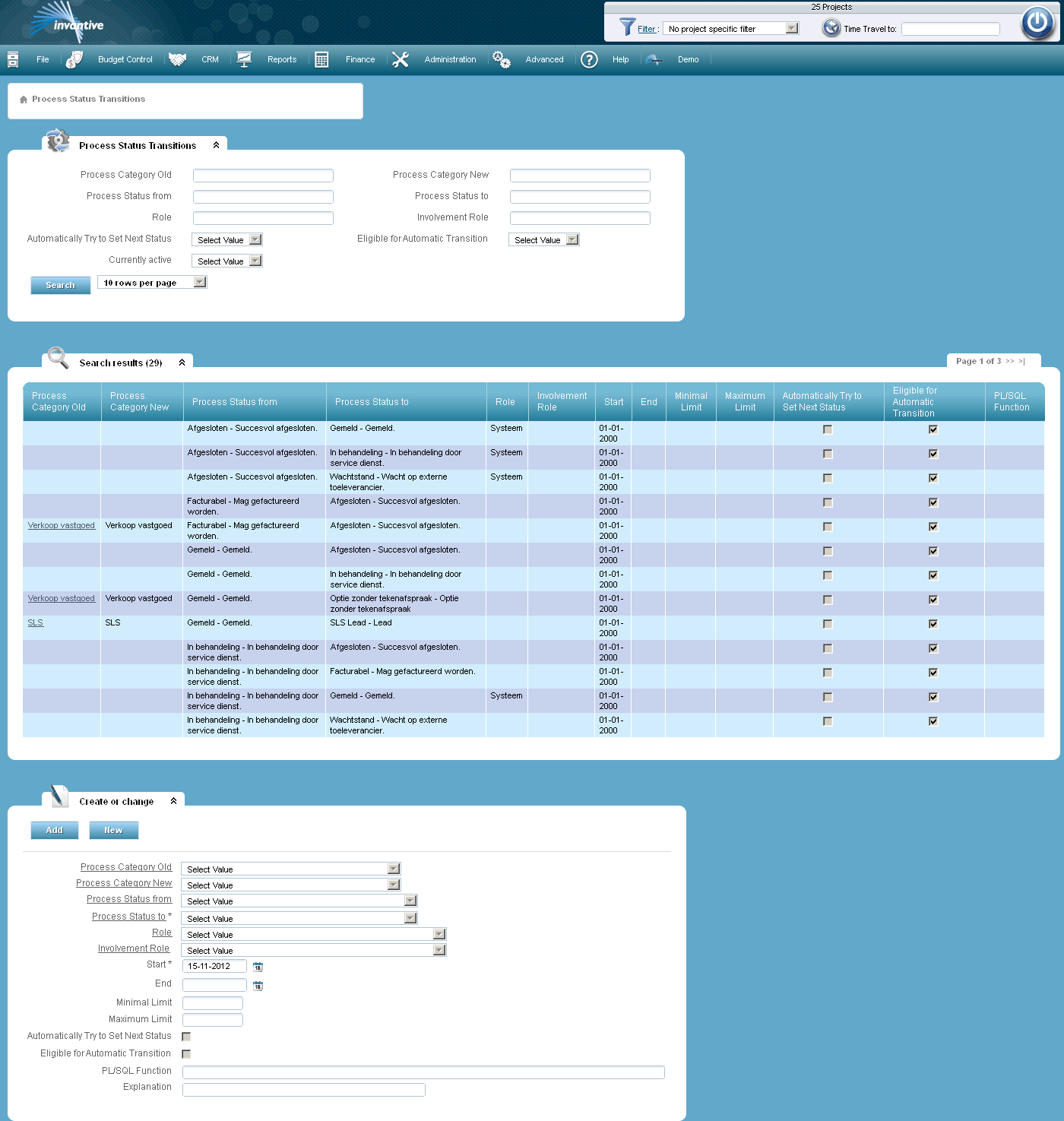In this screen you can register and change transitions between process statuses. Open Form
Open Form
A transition specifies a valid change of the status of a process to a different status. This allows workflows to be defined.
Complex transitions can also be enforced with an additional business rule.

The meaning of the entry fields is:
Process Category Old |
Reference to the process category in the initial situation as registered in Process Categories. |
Process Category New |
Reference to the process category in the new situation as registered in Process Categories. |
Process Status from |
Reference to the process status in the initial situation as registered in Processt Statuses. |
Process Status to |
Reference to the process status in the new situation as registered in Process Statuses. |
Role |
Reference to a role as registered in Roles. Indicates which role is necessary to make the process status transition possible. |
Involvement Role |
Reference to an involvement role as registered in Involvement Roles. Indicates which involvement role is necessary to make the process status transition possible. |
Start |
Start time of the process status transition. |
End |
A task process status transition is allowed until this date. |
Minimal Limit |
Minimum value of the limit of user involvement in relation to this process, project, organization or the involvement of the role (the first of these two which has a value is used), to allow this state transition. |
Maximum Limit |
Maximum value of the limit of user involvement in relation to this process, project, organization or the involvement of the role (the first of these two which has a value is used), to allow this state transition. |
Automatically Try to Set Next Status |
Indicates if the system should try automatically to set the next status if the task meets the conditions and there is only one step further possible. The trying stops when there are multiple or zero potential next steps. |
PL/SQL Function |
Name of the boolean PL/SQL function that results in "true" or "not true". When the function results in ‘true’ the process status transition is permitted. In case the Boolean function results in ‘not true’ or ‘null’ the process status transition is not allowed. |
Explanation |
Remarks concerning the purpose of the process status transition. |
Analyses
Building workflow based on process status transitions is flexible, but sometimes it is difficult determining which steps are run with trying to achieve the next status automatically. With a manual action, several steps at once can be put with any associated actions indirectly through additional business rules. The steps - including automatically made steps - afterwards can be found in the screen Logging.
 Invantive Estate
Invantive Estate